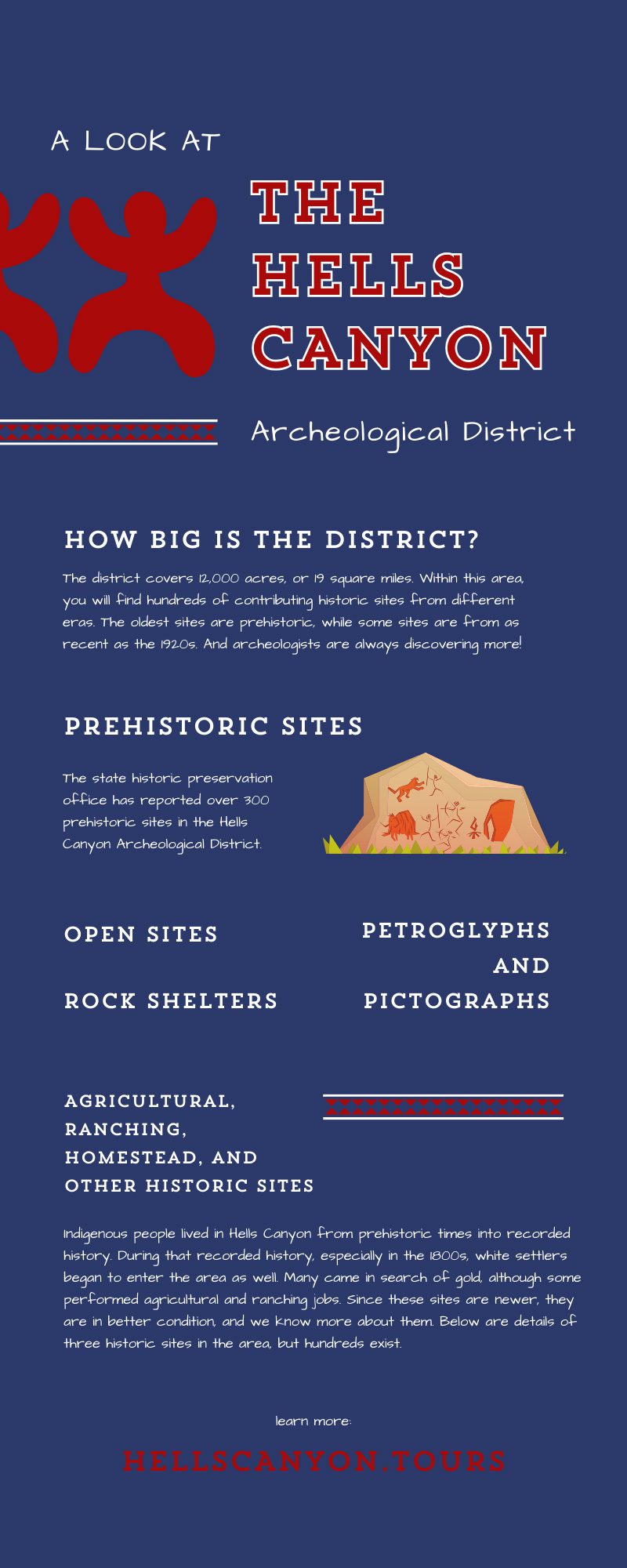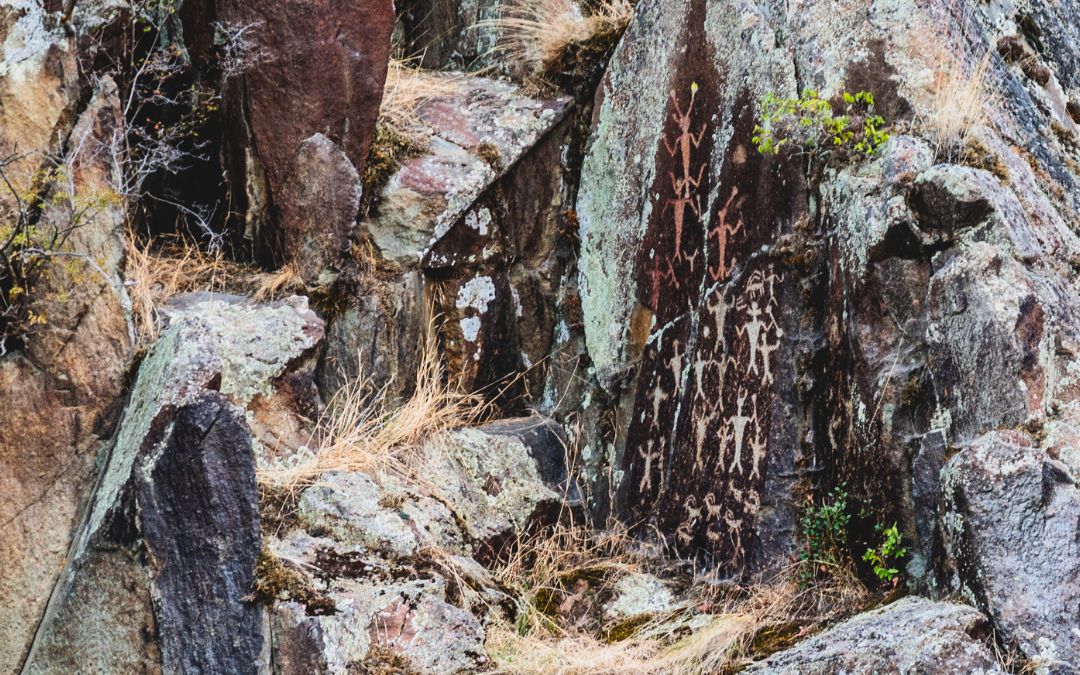Most people are drawn to Hells Canyon because it’s the deepest canyon in North America. While cruising on the river that created this canyon is an incredible experience, this area offers more than water. Amateur and professional history fans have flocked to Hells Canyon for years, appreciating the many historic sites throughout the Hells Canyon Archaeological District. Keep reading to get a look at the impressive history you can find in this district.
Where Is the Hells Canyon Archeological District?
Before you can appreciate the history of the Hells Canyon Archeological District, you must know where it is. The problem with describing the location is that the district is huge. Instead of trying to find the district, we suggest finding the recreation area first. The Hells Canyon Recreation Area surrounds and includes the archeological district. The Wallowa-Whitman National Forest manages this area, and you can find maps from the forest service online or at offices throughout the area.
How Big Is the District?
When we said the archeological district is huge, we weren’t kidding. The district covers 12,000 acres, or 19 square miles. Within this area, you will find hundreds of contributing historic sites from different eras. The oldest sites are prehistoric, while some sites are from as recent as the 1920s. And archeologists are always discovering more!
Prehistoric Sites
The state historic preservation office has reported over 300 prehistoric sites in the Hells Canyon Archeological District. Prehistoric simply refers to anything that occurred between the first use of stone tools and when people began documenting history in writing. By most estimates, the period stretches from roughly 3.3 million years ago to roughly 5,000 years ago.
Some of the prehistoric sites in the Hells Canyon area are rock shelters. Many are open sites, and some combine shelters with open spaces. All types of sites can feature petroglyphs and pictographs. These sites cover both modern-day Idaho and Oregon.
Rock Shelters
Prehistoric indigenous people often used natural rock outcrops for shelter. Vertical and overhanging rock formations provided protection from behind and above. Professionals can determine which rock formations acted as shelters based on several factors, including depressions in the ground.
Many indigenous people would locate a protective rock formation and then dig into the surrounding soil to create an indentation. The indentation allowed for greater headroom when sitting or standing. Stone tools, food scraps such as bones and shells, and charcoal also signal that a particular area was a prehistoric rock shelter.
Open Sites
Ground depressions aren’t just signs of rock shelters. They are also one of the only lasting features of prehistoric homes. A circular or rectangular ground depression in an artificially leveled area is one of the most obvious signs that a home once stood there.
These depressions are sometimes close together, pointing to the presence of a prehistoric community. Rock walls and storage pits are also signs of homes and communities. As with the rock shelters, historians have found signs of life—such as tools and food scraps—around these depressions.
Petroglyphs and Pictographs
Petroglyphs and pictographs are another sign of prehistoric human activity around rock shelters, open sites, and other locations. A petroglyph is carved into a rock surface, while a pictograph is painted on. You can admire this prehistoric art throughout the Hells Canyon Archeological District.
Agricultural, Ranching, Homestead, and Other Historic Sites
Indigenous people lived in Hells Canyon from prehistoric times into recorded history. During that recorded history, especially in the 1800s, white settlers began to enter the area as well. Many came in search of gold, although some performed agricultural and ranching jobs. Since these sites are newer, they are in better condition, and we know more about them. Below are details of three historic sites in the area, but hundreds exist.
Caribou Creek Stone Structure
As we mentioned above, Indigenous people continued to live in Hells Canyon into recorded history. The Nez Perce are one such Indigenous tribe. The Trail of Tears took many native tribes away from their lands in the 1800s. However, the US government signed a treaty with the Nez Perce in 1855 allowing them to access the Hells Canyon area. Unfortunately, the tribe was forced to sign other treaties later that gave up much of their land, but some remained.
The Caribou Creek Stone Structure is evidence of the people who remained. The Nez Perce Sheep Company built a complex of structures in the early 1900s, and the Caribou Creek one is the last remaining structure we can see today.
Kirkwood Bar Complex
The settler Jay Kirkwood and his family settled on the bar in the 1880s, before selling to other settlers who used the site for cattle operations. The area continued to change hands, and new owners often added buildings to the complex. Some disassembled and reassembled buildings exist in the area. People occupied it until 1973. Today, you can see the Jordan family residence, which is a five-room frame building, a bunk house, a cabin, and animal pens and sheds.
Carter Mansion
Perhaps one of the most impressive historic sites in the area is Carter Mansion. Construction on the mansion house and barn finished in 1923 under the supervision of Eliza Clarence Carter. She had the money for the mansion due to working as a moonshiner, which involved running illegal alcohol production and sales. After she was arrested, the mansion was sold and used as a family school. The structure features five bedrooms and front and back covered verandas. The barn is a pole frame with a metal roof.
When Can You Visit These Sites?
The Hells Canyon Recreation Area, and therefore the Hells Canyon Archeological District, is open year round. However, visiting is best outside of winter. Winter is harsh in the area, and visitors often cannot see or safely access many historic sites. If you want to visit historic sites and enjoy other parts of the area, such as boat tours and hiking, visit during warmer months.
We hope this look at the Hells Canyon Archaeological District inspires you to dive into the history of Hells Canyon. If you also want to dive into local adventures, join River Adventures on the best Hells Canyon jet boat tours. We stop at some historic sites and take you through the wondrous nature of the area, with time for food and fun along the way.


Recent Comments